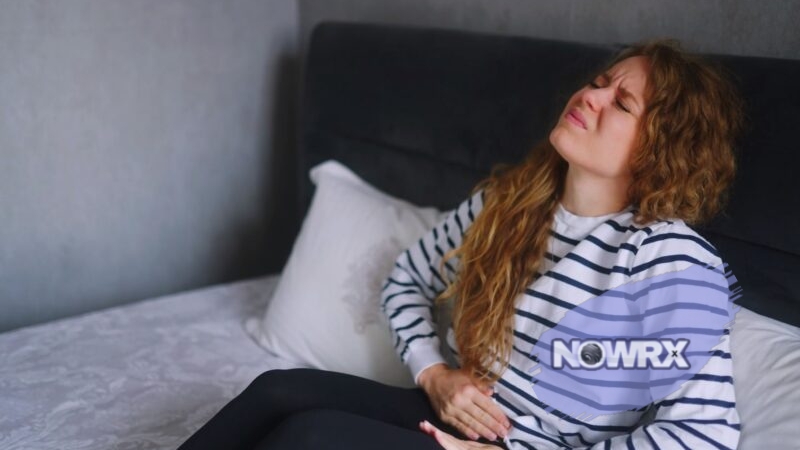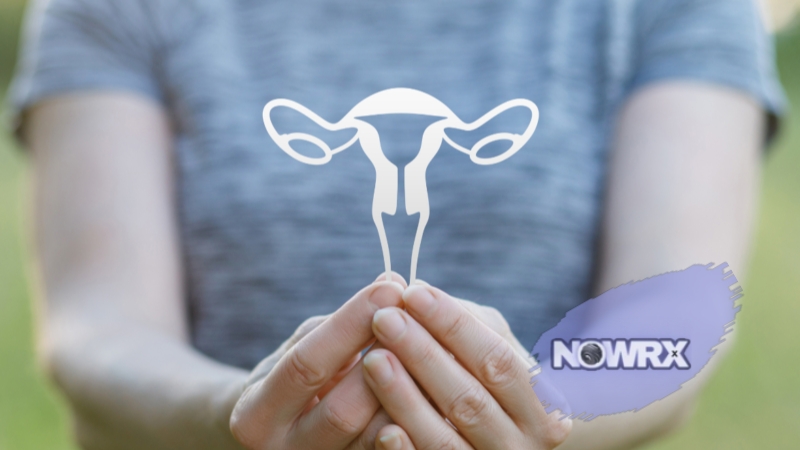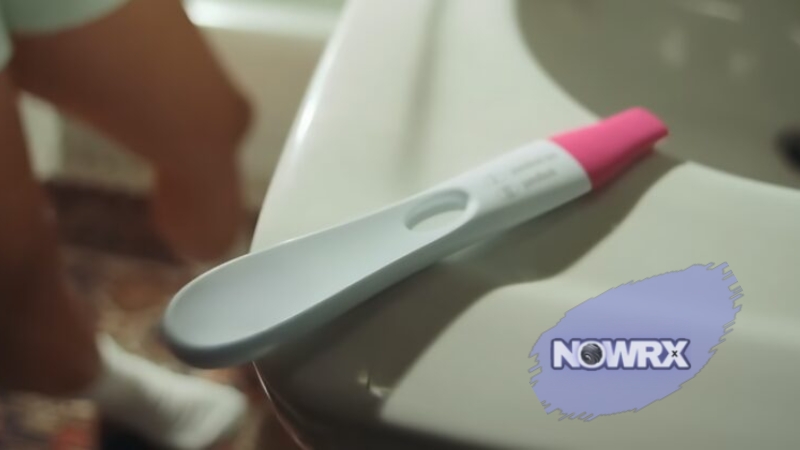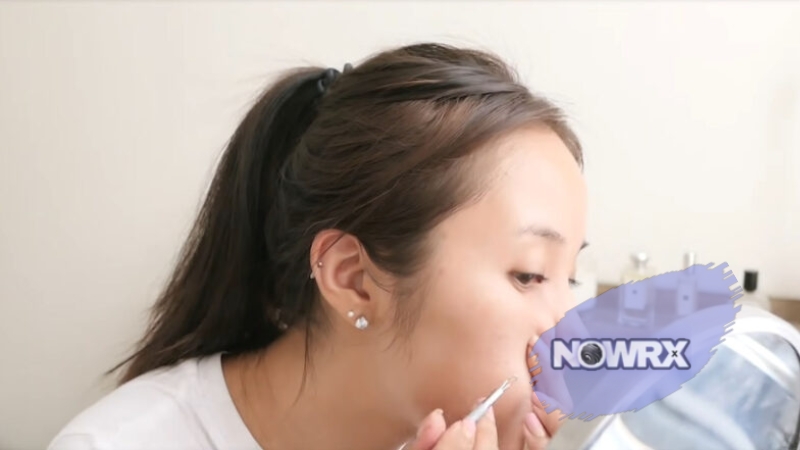Menstrual cramps, or dysmenorrhea, are a common symptom of premenstrual syndrome (PMS) and menstruation, affecting more than 50% of menstruating women worldwide.
They typically begin just before or at the start of the menstrual period and can last from a few hours to a few days. The pain is often accompanied by other symptoms such as headaches, nausea, and mood swings.
This article will explain how massage can help relieve period cramps, making your monthly struggle a little less painful.

What does the massage therapy do?
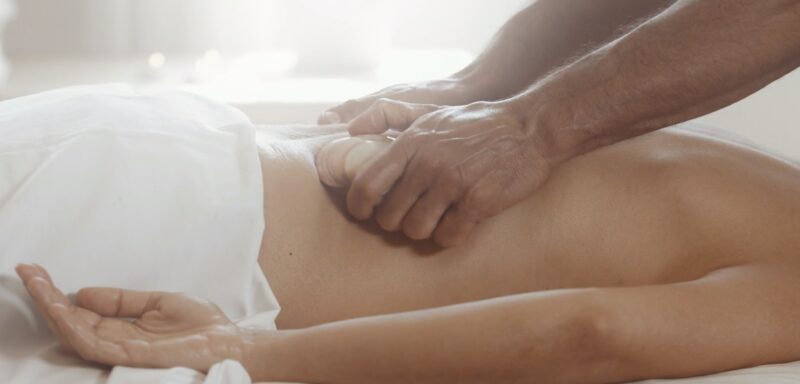
Massage therapy works through several mechanisms:
- promoting relaxation
- increasing blood flow
- decreasing stress levels
- reducing muscle tension
- triggering the release of endorphins (the body’s natural painkillers)
Massage therapy may reduce the discomfort of menstrual cramps by treating both the physical and mental components of period pain. With its ability to lessen pain intensity and enhance quality of life, massage therapy has gained scientific approval for its use in treating menstrual cramps.
But, it’s important to note that research in this area is still emerging, and more studies are needed to fully understand the benefits and limitations of massage for menstrual pain relief.
Did you know? Approximately 800 million people between the ages of 15-49 menstruate each day worldwide, totaling around 1.8 billion individuals who menstruate every month globally.
What types of massage therapy can help?
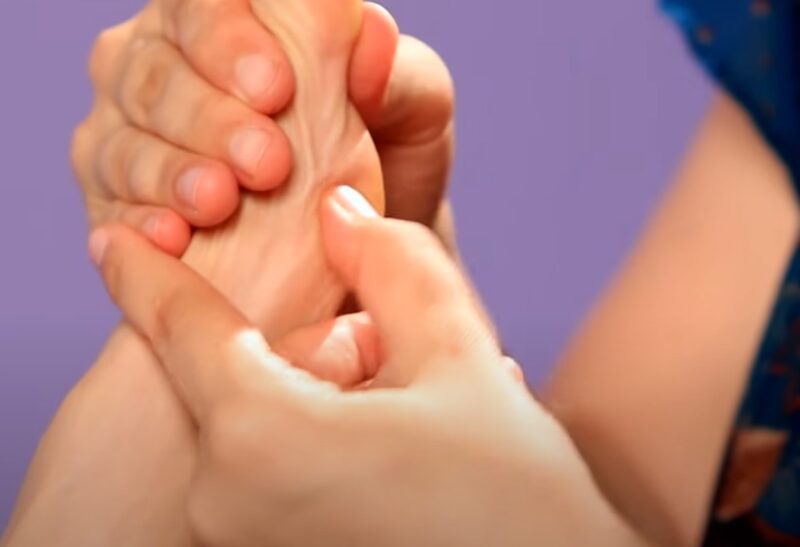
Several types of massage can be particularly effective for alleviating menstrual cramps:
Oil massage
This involves the use of essential oils that are massaged into the skin.
The use of warm oils like almond oil, coconut oil, or jojoba oil during a massage session can aid in relaxing muscles, reducing tension, and improving blood flow, which in turn helps alleviate pain and discomfort associated with menstrual cramps.
Compression massage
It can help reduce menstrual pain by effectively reducing spasms, muscle tension, and inflammation through the application of direct pressure to the abdominal area.
This technique is known for its ability to improve circulation and relax tense muscles, providing valuable relief from menstrual discomfort. By applying pressure either with hands, fingers, or specialized massage tools, compression massage targets the deep-seated tension contributing to menstrual pain, offering immediate and profound relaxation.
Shiatsu massage
This is a form of Japanese massage that uses rhythmic pressure from the fingers on different parts of the body. Shiatsu massage can help reduce menstrual pain by targeting specific pressure points on the body associated with menstrual discomfort.
For example, by focusing on points like Liver 3 (LV3) for cramps and lower back pain, Spleen 6 (SP6) for abdominal pain, and Large Intestine 6 (LI6) for headaches, Shiatsu massage can effectively relieve pain, relax muscles, improve circulation, and reduce inflammation associated with menstrual cramps
Deep tissue massage
It target chronic tension in muscles located deep below the body’s surface. The pressure applied during a deep tissue massage session can increase blood flow to the pelvic area, reduce muscle tension, alleviate pelvic and back pain, and trigger the release of endorphins, the body’s natural painkillers. This combination of effects helps reduce the intensity and duration of menstrual pain, allowing individuals to manage their daily activities more comfortably.
For those interested in trying these techniques, there are resources and professionals available who specialize in massage therapy for menstrual pain. Still, it is always advisable to consult with a healthcare provider before beginning any new treatment.
Self-massage vs. professional massage
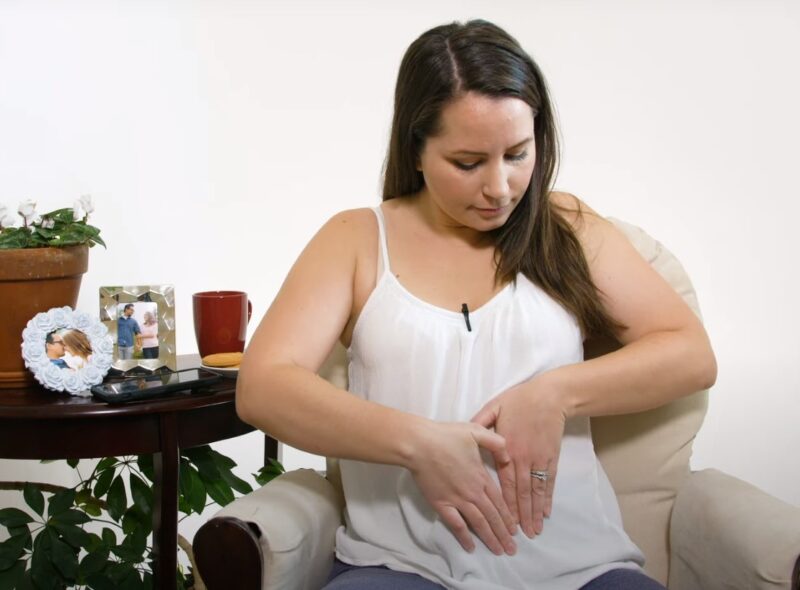
| Aspect | Self-Massage | Professional Care |
|---|---|---|
| Accessibility | Highly accessible; can be performed anytime, anywhere. | Requires booking appointments; availability may vary. |
| Cost | Cost-effective; no professional fees. | Higher cost due to professional fees. |
| Personalization | Basic personalization based on self-knowledge. | Highly personalized; professionals can tailor techniques to your specific needs. |
| Technique | Limited by one’s own knowledge and ability to apply techniques correctly. | Wide range of techniques applied correctly under trained supervision. |
| Convenience | Immediate relief without the need to travel. | May involve travel and scheduling time. |
| Expertise | Limited to the individual’s understanding of massage techniques. | Access to expert knowledge and a broader range of techniques. |
| Long-Term Relief | May provide temporary relief; effectiveness can vary. | Potential for more comprehensive and long-lasting relief through targeted approaches. |
| Safety | Generally safe, but there’s a risk of incorrect technique. | Professionals can adjust techniques to avoid harm and address specific health concerns. |
| Experience | Self-guided; the experience may lack the depth of a professional setting. | Often provides a more immersive and relaxing experience. |
How to use self-massage techniques for menstrual cramp relief?
1. Create a relaxing environment

Find a quiet, comfortable space. Use soft lighting or candles and play calming music if it helps you relax.
Ensure the room is at a comfortable temperature.
2. Choose the right oil
Select a massage oil; consider adding a few drops of essential oils like lavender, clary sage, or marjoram for their soothing properties. Warm the oil by rubbing it between your hands.
3. Start with an abdominal massage
Lie down on your back with your knees bent and feet flat on the floor or bed. Place your hands on your lower abdomen.
Apply gentle pressure in a circular motion, moving your hands in a clockwise direction. Focus on breathing deeply and evenly as you massage.
Do this for 5-10 minutes or as long as it feels comforting.
4. Lower back cassage
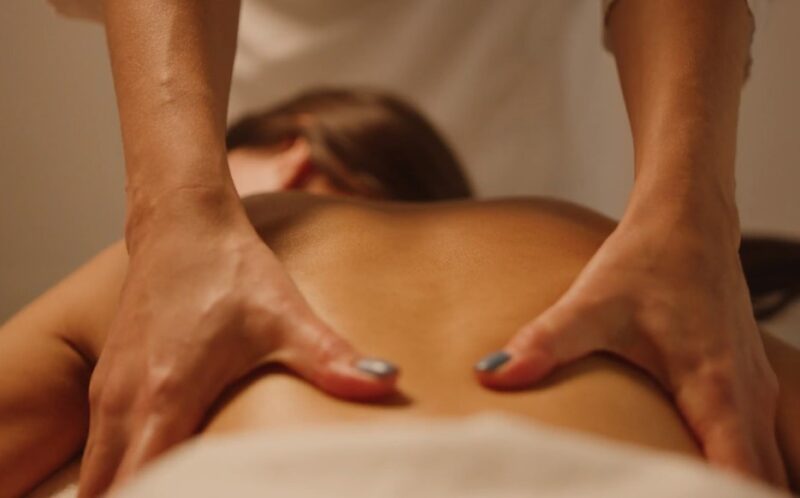
Turn over gently and lie on your stomach or sit in a comfortable chair. Reach your hands to your lower back or use a tennis ball or foam roller.
Apply pressure in a circular or up-and-down motion. Spend extra time on areas that feel particularly tense.
Continue for 5-10 minutes.
5. Leg massage
While lying on your back, massage your thighs and calves in a downward motion towards your feet. This can help with overall relaxation and improve circulation.
6. Foot massage
Apply pressure to the arches of your feet, using your thumbs to knead any tense areas. Foot reflexology suggests that certain areas of the feet correspond with the reproductive system, and massaging these can provide relief.
7. Finish with relaxation
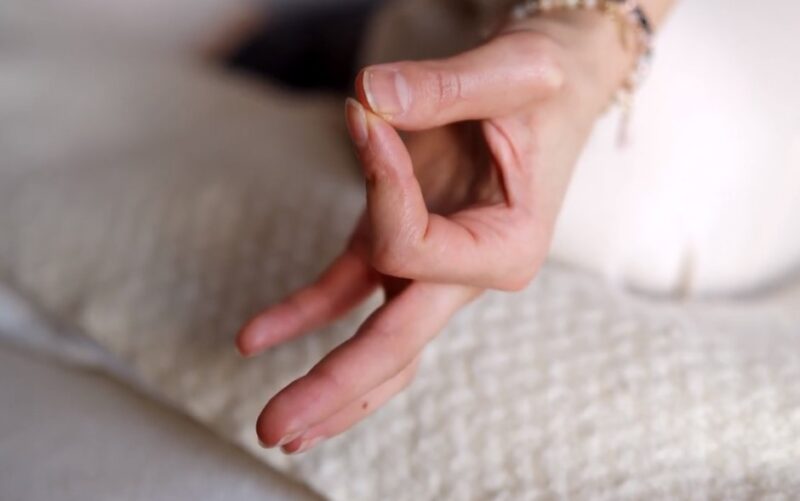
Once you’ve completed your self-massage, take a few minutes to relax. Continue with deep breathing, allowing your body to absorb the benefits of the massage.
Tips for effective self-massage
- Always use gentle pressure and avoid any movements that cause pain.
- Use smooth, fluid motions and avoid jerky movements.
- If you encounter areas of tension, spend a little more time massaging these spots.
- Listen to your body and stop if anything feels uncomfortable.
Remember, self-massage should not replace medical treatment. It is important to consult with a healthcare provider if menstrual cramps are severe or have changed in pattern or intensity.
Self-massage is one of many tools that can be used to manage symptoms and should be part of a comprehensive approach to wellness.
How Do Massage Therapies Compare to Other Methods?
While massage therapy is an effective method for some, other common methods for alleviating menstrual cramps include exercise, heat therapy, dietary adjustments, herbal remedies, and acupuncture. Each approach has its strengths and weaknesses, varying in evidence, availability, affordability, and potential side effects.
Combining massage therapy with other methods, such as using heat pads during massage, taking anti-inflammatory supplements, or practicing yoga, can provide more comprehensive relief from menstrual cramps.
FAQ
Final Words
Massage therapy emerges as a safe, effective, and natural approach to treat menstrual cramps and pain relief. More research is needed to fully understand its benefits and limitations, but the existing evidence supports its use as a complementary treatment for dysmenorrhea.
Women interested in exploring massage therapy for menstrual cramps should consult their healthcare provider, seek a qualified massage therapist, and consider the best type and frequency of massage for their individual needs. In case you are looking for ways to delay menstruation with herbal remedies check our article.
Drake Holloway, 45, is a pharmacist and freelance blog writer for NowRx.com. He uses his professional background to provide information and opinions on diverse subjects to those seeking guidance.

